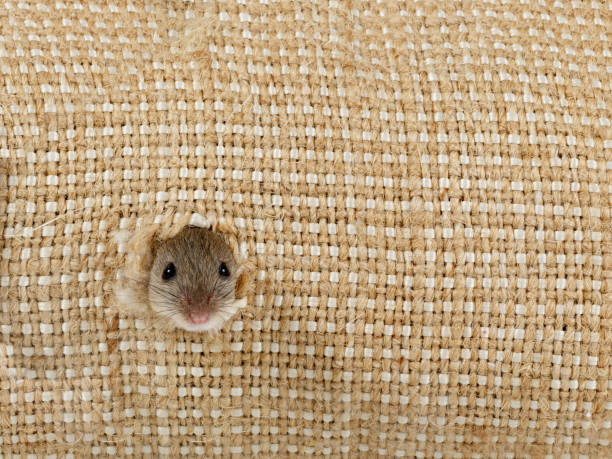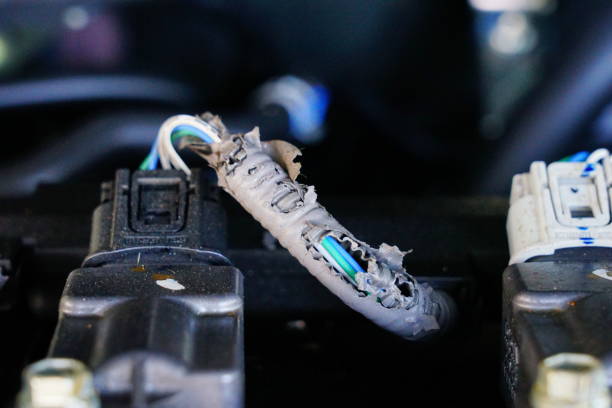
Awh, Springtime!!! The birds are chirping, and Mother Nature is calling! You feel that itch to get the pop-up camper ready for camping season and decide today is the day to pop it up! You grab your crank and slowly start to lift your camper, but then you spot some evidence of a nest. You stop, walk around and more horror occurs droppings! Without fail you start yelling, cursing, or in some cases, crying and imagine the cost to repair it!!!

Mice!
Yes, they’re tiny. They’re quiet. They’re sneaky, and they’re smart. How cute and furry they can be on a wheel and in a cage, well to some, but when those little creatures wreak havoc to your pop-up camper by chewing holes into your cabinets, curtains, and canvas and bury their little ones snuggly in your camper’s cushions or worse the mattress then all holdbacks are over.
Mice are picky they will eat just about anything. Mice want three things food, warmth, and a place to breed. If you provide them that they will come a running.

Pricy $$$
The cost of re-canvassing your entire pop-up could be anywhere from $900 to $1800. The time removing the old and replacing the new is another back and headache waiting to happen. In some cases, the word “divorce” is mentioned once or twice. No joke there!!! You can shell out more money to have a company do it for you though but then another cost is added and the wait time is over 10 months.
To replace your flooring and cabinetry is another $200 to $400 and the same goes with cushions and mattresses. Now you can do this all yourself if you are a DIY’er or just sell the freaking camper and buy a different one, something with less work, but what is the fun in that. At this point, camping season seems to just be blowing in the wind including your money.
Answers
So, now we have a clear picture of what mice can do to our pop-up camper, how do we stop it, and can we? It seems that if we spend a little time and money at the beginning, we won’t have to worry about spending a lot at the end.
Here are some things that I have personally tried and do every year whether it’s during camping season or at the end when I winterize my camper. Some of these items just take a few moments of your time others a little bit of your money. You can decide what it is worth for you!

Storage
Ideally, storing your camper indoors is the best way to go, but if you are not able to do so think about these few things. Are you storing it on concert or dirt/ grass? Those little mice can go anywhere but usually hide in fields with tall grass or structures where they are hidden from predators. The grass is an easy way for mice to hide in and when your camper is stored there year around your asking for trouble if you don’t repel them. Keep stacks of wood away from your camper as well. Make sure all grass, twigs, and any debris are cleared away for the camper.
Idea: A good friend of mine uses smaller rocks and bricks under each wheel. They also have created a higher service for the camper to sit on with the bricks.
Storing it indoors works best but not if you already have a pest problem. Clean out your garage, carport, or workshop, and make sure there are no food sources near your camper like garbage cans, cardboard boxes, and paper materials. Again, make sure there is no debris or items near your wheels allowing them to crawl right up.

No free meals!
What we think is “gross”, mice will think, “cool a free buffet!” Believe it or not, there are some things mice are just drawn to. Whether you have just finished a camping trip or are winterizing for the end of the camping season, you will need to remove all food sources from the camper. This could be your spices, condiments, candles, leftover food in the refrigerator, etcetera. Store items like clean linens, napkins, paper towels, coloring books, toilet paper in airtight containers.

Clean! Clean! Clean!
I can’t stress enough about keeping food sources out of the camper. Crumbs from food get trapped in small places attracting little mice. Completely sweep and vacuum the camper regularly and do a deeper clean for the winterization process. No crumbs anywhere!!! Whip down and clean all kitchenware and equipment like stovetops, coffee makers, utensils, grills, radios, etc… Remove all the grease and food residue to your best abilities. If you’re not able to then remove them from the camper and store them in an airtight container.
Tip: make sure you vacuum around the beds and cushions where food gets trapped. We remove the beds and cushions to dust out then vacuum underneath.

Items to Try
You may have heard of different ways or products to deter mice and this list may contain some. With pros and cons to each one.
Lint drying sheets
I do this just to refresh the camper.
Pros- Makes the cabin smell good! Easy to store and very cheap to get!
Cons- Some say it doesn’t work and show pictures of mice nests with laundry sheets inside of it. EEK!
Spray repellent
I use this on the underside of my camper near the wheel wells and underneath the bunk ends.
Pros- Works wonders and little goes a long way can also work against other small rodents
Cons- Some can smell awful and can be pricy. Use in open area! Try a Botanical Rodent Repellent if Eco-friendly.
Peppermint oil
Mice hate the strong aromatic properties. Easy to do, dab some oil onto cotton balls and lay around the camper.
Pros- Get Rid of Rats Naturally and the smell is great.
Cons- Can be costly for strong doses. Can also leave a greasy residue on wood and paint.
Mousetraps and baits
Pros- Come in different varieties from glue traps, boards, traps, and baits
Cons- Bait can be deadly to other pets nibbling on them.
Ultrasonic Pest Control Electronic Plug-in Repellent
Pros- Come in different varieties battery to a plugin, easy to use, and no harm to humans or pets
Cons- takes 3-4 weeks to work and doesn’t always work. Can be a pricier method
Zest soap Bars
Pros- Inexpensive and easy to do. Best to put in smaller sachets around the cabin.
Cons- Can break into a million pieces and make your cabin smell like a logger. Some say it doesn’t work.

Block Their Usual Entrances
Mice usually get in from the bottom of your camper near the window well or opening from the bottom floor, it is practically a welcome mat. It’s often a gateway to your camper. Keep camper-free from items nearby or under the trailer.
- Mice can jump from object to object and enter in areas to small to see. Caulk all edges and replace molding to ensure a tight fit.
- Those who store their camper indoor needs to look for holes and gaps along the garage exterior. Seal ‘em up. As well as do your best to reduce clutter, which can offer nice, cozy spots for mice to rest and nest.
- Use repellent around wheel tires and trailer jack. This will deter them from trying to climb the wheels to enter.
Repelling mice and rates before they wreak havoc on your pop-up camper can be very cost-effective. Although it is hard to keep them out, the items listed above help you protect your campers’ cabinets, cushions, and canvas. If you have tried them out let us know how they worked for you.


